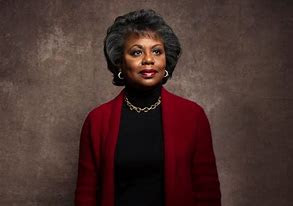 |
| Anita Hill Photo by Victoria Will/Invasion/AP See Victoria's art |
"Women who accuse men, particularly powerful men, of harassment are often confronted with the reality of the men's sense that they are more important than women, as a group." ~ Anita Hill, Speaking Truth to Power
"The real problem is that the way that power is given out in our society pits us against each other." ~ Anita Hill
 |
| Nine to Five: Jane Fonda, Dolly Parton and Lily Tomlin (1980) |
After
watching the 9 to 5, I began reflecting on Tarana Burke, #metoo, and other
movies during my young adult life that satirized sexual harassment:
Grease, Toosie, Sixteen Candles…. It became an enlightening moment for
me; I couldn’t name any films that showed women of color experiencing sexual
harassment. I began to wonder where were the mainstream films about
women of color experiencing sexual harassment?
It
is 1991, ten years after the film came out, and Anita Hill becomes a national
figure. Hill accuses US Supreme Court nominee, Clarence Thomas, her boss
of sexually harassing her. Most of the public criticized her behavior rather
than Thomas’ behavior. What I found most disturbing, the public stating Hill liked
his behavior otherwise she would have spoken out sooner. The public labeled her either as a liar or
truth teller.
 |
| Anita Hill Photo by Lyne Lucien/Daily Beast See Lyne's art |
I
think back to the movies. The dominant narrative (or plot line) showed
repetitively white women experiencing sexual harassment at work or at school.
Hill was a black woman presenting the public another story about sexual
harassment. A story many weren’t familiar with: a black woman being sexually
harassed. Unlike the movies, fictional accounts most likely based on real
life, Hill’s story was real. I continue to wonder why most of the public
resisted her story. I wonder how I, a white woman, continue to
perpetuate and resist this narrative for women of color?
Calling on All Silent Minorities
June Jordan, 1936 - 2002
Directed by Desire: The Complete Poems of June Jordan (2005). Copper Canyon Press. Learn more about this poet click here or purchase her book at IndiBound
~~~
Calling on All Silent Minorities
June Jordan, 1936 - 2002
C’MON
COME OUT
WHEREVER YOU ARE
WE NEED TO HAVE THIS MEETING
AT THIS TREE
AIN’ EVEN BEEN
PLANTED
YET
Directed by Desire: The Complete Poems of June Jordan (2005). Copper Canyon Press. Learn more about this poet click here or purchase her book at IndiBound
~~~
 |
Artist Mark Bradford and Brandeis Professor Anita Hill pose in front of Bradford's painting, "Sea Monster."
Photo from Rose Art Museum
|
Artual Action:
This resource can be implemented or adapted for a staff meeting or used
for individual self-reflection.
1. Name and reflect on the movies you have seen that uses humor/satire
reveal sexual harassment or sexual violence.
2. Are you aware of any films depicting sexual violence happening to women
of color? How is sexual violence
depicted?
3. View Anita, the documentary or Anita Hill Testimony: Clarence
Thomas Second Hearing Day 1 (1991). Do you believe the dominate
narrative at that time had an effect on the reception of Anita Hill’s testimony? What about if it were to happen today?
4. What are the challenges, risks and opportunities
associated with using humor to shed light on oppression issues? Is/what are the difference(s) if it is happening
to a person of color?
Resources:
·
Anita. (2014) Director Freida Lee
Mock. Documentary.
·
Anita Hill on the Thomas hearings, 25 years later:
‘I would do it again’(7 Apr. 2016) PBS News Hour.
·
Conversations between Mark Bradford and Anita
Hill. (14 Apr, 2018) Hammer Museum, Los
Angeles, CA
·
The Woman Who Created #MeToo Long
Before Hashtags. (17 Oct. 2017) Sandra E. Garcia. New York Times.
·
When Black Women's Stories Of Sexual
Abuse Are Excluded From The National Narrative. (3 Dec. 2017) Lulu Garcia
Navarro. National Public Radio
·
The #MeToo Movement Looks Different
For Women Of Color. Here Are 10 Stories. (2, Jan. 2018) Jessica Prois and
Carolina Moreno. Huffington Post
·
Why few women of color in wave of
accusers? ‘Stakes higher’. (18 Nov., 2017) Errin Haines Whack. AP News.
·
For African American rape victims, a
culture of silence. (20 July, 2004) Gayle Pollard-Terry. Los Angeles Times.
·
Using Humor to Expose the
Ridiculous. New Tactics in Human Rights
·
Sample Learning Tool on Dominant
Narratives (Self Reflective or Small Group Questions) University of Michigan.
No comments:
Post a Comment
Hi all - I really like your comments, but have had a change of heart regarding anonymous comments. My CCWWW beliefs are that you need to stand behind what you say and what you do. Peace out.